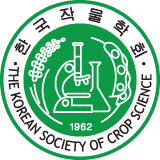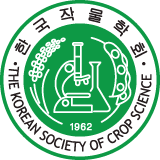Abstract
References
Information
Commey, L., T. K. Tengey, C. J. Cobos, L. Dampanaboina, K. K. Dhillon, M. K. Pandey, H. K. Sudini, H. Falalou, R. K. Varshney, M. D. Burow, and V. Mendu. 2021. Peanut seed coat acts as a physical and biochemical barrier against Aspergillus flavus infection. Journal of Fungi 7(12) : 1000.
10.3390/jof712100034946983PMC8708384
Nayak, S. N., G. Agarwal, M. K. Pandey, H. K. Sudini, A. S. Jayale, S. Purohit, A. Desai, L. Wan, B. Guo, B. Liao, and R. K. Varshney. 2017. Aspergillus flavus infection triggered immune responses and host-pathogen cross-talks in groundnut during in-vitro seed colonization. Scientific Reports 7(1) : 9659.
10.1038/s41598-017-09260-828851929PMC5574979
Pandey, M. K., R. Kumar, A. K. Pandey, P. Soni, S. S. Gangurde, H. K. Sudini, J. C. Fountain, B. Liao, H. Desmae, P. Okori, X. Chen, H. Jiang, V. Mendu, H. Falalou, S. Njoroge, J. Mwololo, B. Guo, W. Zhuang, X. Wang, X. Liang, R. K. Varshney, and R. K. Varshney. 2019. Mitigating aflatoxin contamination in groundnut through a combination of genetic resistance and post-harvest management practices. Toxins 11(6) : 315.
10.3390/toxins1106031531163657PMC6628460
Rao, M. J. V., S. N. Nigam, V. K. Mehan, and D. McDonald. 1989. Aspergillus flavus resistance breeding in groundnut: progress made at ICRISAT Center. In: McDonald D, Mehan VK (eds) Aflatoxin contamination of groundnut. Proc Int Workshop, 6-9 Oct 1987, ICRISAT Center. International crops research institute for the semi-arid tropics, Patancheru, AP, India, pp. 345-355.
Woo, S. Y., H. E. Ok, S. Y. Lee, A. Y. Jeong, T. K. Jeong, and H. S. Chun. 2022. Simple chromatographic determination of aflatoxins in Korean fermented soybean products doenjang, ganjang, and gochujang, with comparison of derivatization methods. Food Science and Biotechnology 31(4) : 475-482.
10.1007/s10068-022-01045-835464246PMC8994806
Yu, B., D. Huai, L. Huang, Y. Kang, X. Ren, Y. Chen, X. Zhou, H. Luo, N. Liu, W. Chen, Y. Lei, M. K. Pandey, H. Sudini, R. K. Varshney, B. Liao, and H. Jiang. 2019. Identification of genomic regions and diagnostic markers for resistance to aflatoxin contamination in peanut (Arachis hypogaea L.). BMC Genetics 20(1) : 1-13.
10.1186/s12863-019-0734-z30866805PMC6417274
Yu, B., H. Jiang, M. K. Pandey, L. Huang, D. Huai, X. Zhou, Y. Kang, R. K. Varshney, H. K. Sudini, X. Ren, H. Luo, N. Liu, W. Chen, J. Guo, W. Li, Y. Ding, Y. Jiang, Y. Lei, and B. Liao. 2020. Identification of two novel peanut genotypes resistant to aflatoxin production and their SNP markers associated with resistance. Toxins 12(3) : 156.
10.3390/toxins1203015632121605PMC7150746
- Publisher :The Korean Society of Crop Science
- Publisher(Ko) :한국작물학회
- Journal Title :The Korean Journal of Crop Science
- Journal Title(Ko) :한국작물학회지
- Volume : 68
- No :3
- Pages :175-187
- Received Date : 2023-07-31
- Revised Date : 2023-08-11
- Accepted Date : 2023-08-11
- DOI :https://doi.org/10.7740/kjcs.2023.68.3.175




 The Korean Journal of Crop Science
The Korean Journal of Crop Science








